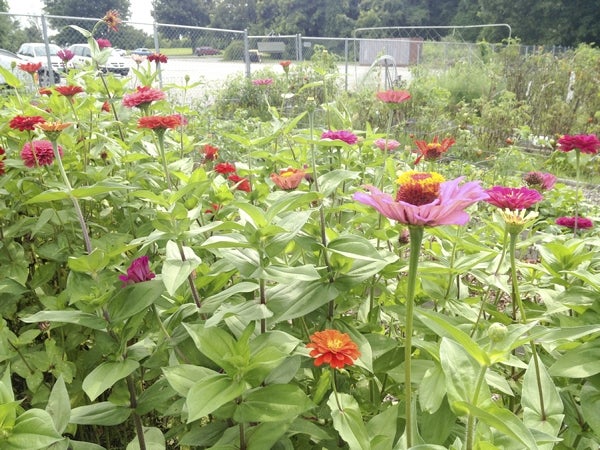How do I manage deer in my yard?
Published 12:00 am Friday, December 11, 2015

- Cooperative Extension Some people try to use chain link fencing to keep deer away from their landscape plants, but deer can jump many fences.
By Amy-Lynn Albertson
Rowan County Extension Director
It’s deer season again. Every year in November my peaceful rural neighborhood suddenly becomes a flurry of pickup trucks and gunshots.
Where I live, deer damage in the landscape isn’t an issue, because my husband’s dream is shooting a deer out of our bedroom window. However, in urban and suburban areas, deer damage has become a real issue. As people continue to build and take over the deer’s natural habitat, replacing their food source with ornamental landscapes, the deer has to adapt.
Many homeowners love the idea of seeing Bambi frolicking in their yards, but after Bambi eats all their hostas and tramples their newly planted annuals they start singing a different tune. Deer damage home landscapes by feeding on garden and landscape plants, rubbing their antlers against trees or scraping the soil around trees.
A hungry deer will eat almost anything. Young, tender plants are generally more likely to be damaged than older, tougher plants. Don’t mix plants deer prefer among those they dislike. They’ll trample the plants they dislike to get to those they prefer. Deer generally dislike trees and shrubs with thorns such as barberry and black olive. They are not fond of most ornamental grasses either.
Rutgers University in New Jersey has put together a fabulous searchable database of plants that are “rarely damaged” to “frequently severely damaged.” Go to http://njaes.rutgers.edu/deerresistance. You can search by type of plant or by level of damage.
Other methods of managing deer damage are fencing, noise and repellents. Fences should be 6 feet high and at a 30 degree angle to be effective. Noise usually ends up irritating your neighbors and is only effective on the deer for a short period of time. It might scare the deer initially but they will get used to the noise and come back.
Two basic types of deer repellents are available. Contact repellents are applied to the plants, causing them to taste bad. Area repellents are placed in the problem area and repel due to their foul odor. A study conducted in Connecticut tested six repellents. Generally, repellents were more effective on less preferred plants. Here are the findings:
- Big Game Repellent also known as Deer Away, made from putrescent (rotten) whole egg solids was 46 percent effective.
- Hinder, made from ammonium soaps of higher fatty acids was 43 percent effective.
- Thiram, a bitter tasting fungicide, now commonly used in repellents, was 43 percent effective.
- Mesh bags of human hair, collected from hair styling shops, was found to be 34 percent effective. (Hair should be dirty, not collected after a shampoo.)
- Magic Circle deer repellent, a bone tar oil which was soaked into 10 by 30 cm. burlap pieces, was 18 percent effective.
- Miller Hot Sauce, containing capsicum, an extract of hot peppers, was 15 percent effective.
Finally, go to www.ncwildlife.org for hunting regulations in North Carolina. Most cities do not allow hunting with guns in city limits; some do allow bow hunting. Always follow hunter safety guidelines and have the proper license.





